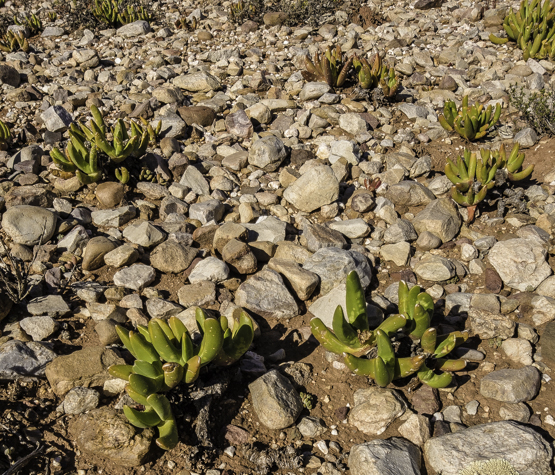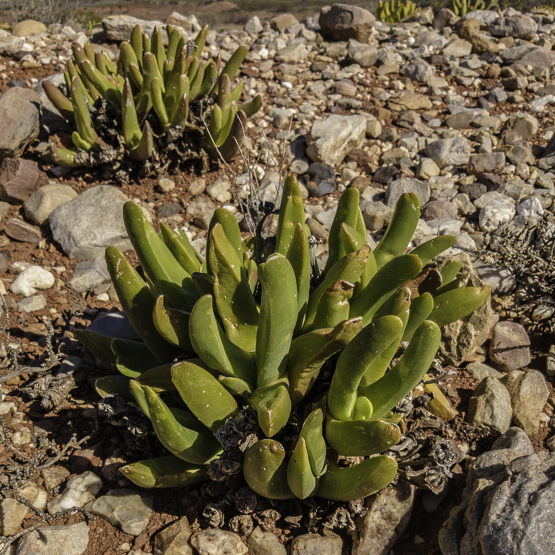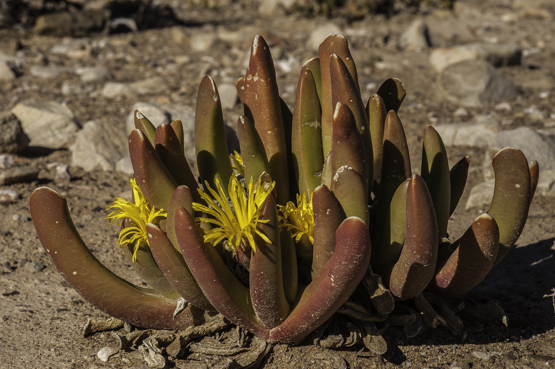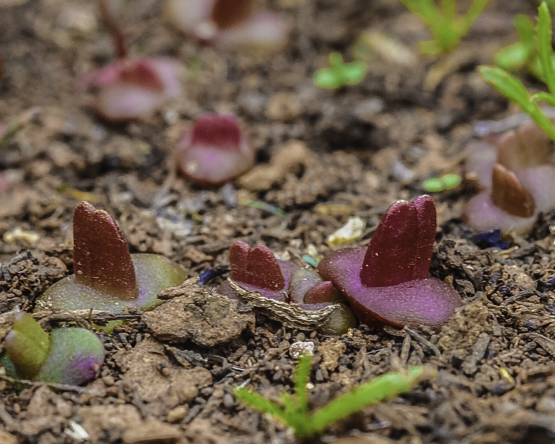This is the largest species of the genus (regium = royal), forming robust compact clumps up to 15 cm across.
The leaves are decussate (arranged in a cross), longer than 6.5 cm (up to 13 cm) and 2 cm wide, three-angled in cross-section to more or less cylindrical. They have a sharp upright point and are slightly unequal, narrowed below and ranging in colour from bright green and grey-green to ochre.
The flowers have long stalks (longer than 3 cm), are up to 3.5 cm across and appear from June to December. After flowering, the fruits remain on the plants.
Although the species is locally abundant, it only occurs in a handful of sites near Calitzdorp, on sandstone slopes and sandy-loamy soils. It is therefore categorized as endangered.
In G. surrectum the leaves are similar in shape, but shorter than 6 cm.
G. cruciatum is similar in general appearance, but has leaves with an expanded base.



